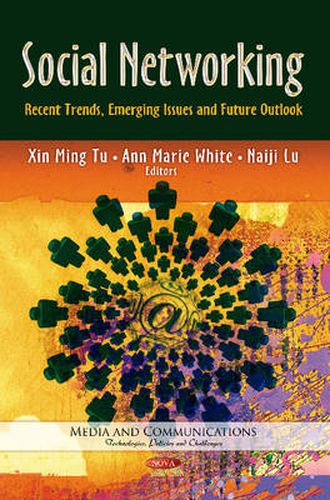Readings Newsletter
Become a Readings Member to make your shopping experience even easier.
Sign in or sign up for free!
You’re not far away from qualifying for FREE standard shipping within Australia
You’ve qualified for FREE standard shipping within Australia
The cart is loading…






Social networking focuses on social relationships (eg: friendships) diagrammed as nodes (points) and links (ties or edges between points). Social network analysis (SNA) examines features of such relationships within a social networking system, including how such social interactions change over time. SNA can measure and map connectedness or flow (eg: information, resources, etc.) within and across individuals, groups, and organisations. SNA can examine these ties in virtual- or geo-temporal spaces – yielding rich mixed methods possibilities and wide application to a host of scientific phenomena. The advent of social media established a cultural meme that carries social network concepts to broader public audiences, and that reinforces SNA’s path to be a powerful interdisciplinary approach. Google Ngram viewer shows the use of social network analysis in the corpus of books burgeoned in the late 1960s, and has continued to grow exponentially since the 1990s. The conceptual and methodological reach now extends both widely – across scientific disciplines – and deeply – as field advances arise with the rapid pace of new inquiries. Facing this tremendous promulgation and diversification of SNA, this book distills essential frontiers across fields. Introducing emerging issues in the application of social network theory and SNA, and how these can or will be addressed, each chapter illuminates new trends or applications of a social network approach that can have wide potential impact in other disciplines. Conceptual advances (eg: applying the concepts of social networks such as peer influence on disease management and treatment adherence), as well as novel analytic approaches for studying properties of social networks are highlighted.
$9.00 standard shipping within Australia
FREE standard shipping within Australia for orders over $100.00
Express & International shipping calculated at checkout
Stock availability can be subject to change without notice. We recommend calling the shop or contacting our online team to check availability of low stock items. Please see our Shopping Online page for more details.
Social networking focuses on social relationships (eg: friendships) diagrammed as nodes (points) and links (ties or edges between points). Social network analysis (SNA) examines features of such relationships within a social networking system, including how such social interactions change over time. SNA can measure and map connectedness or flow (eg: information, resources, etc.) within and across individuals, groups, and organisations. SNA can examine these ties in virtual- or geo-temporal spaces – yielding rich mixed methods possibilities and wide application to a host of scientific phenomena. The advent of social media established a cultural meme that carries social network concepts to broader public audiences, and that reinforces SNA’s path to be a powerful interdisciplinary approach. Google Ngram viewer shows the use of social network analysis in the corpus of books burgeoned in the late 1960s, and has continued to grow exponentially since the 1990s. The conceptual and methodological reach now extends both widely – across scientific disciplines – and deeply – as field advances arise with the rapid pace of new inquiries. Facing this tremendous promulgation and diversification of SNA, this book distills essential frontiers across fields. Introducing emerging issues in the application of social network theory and SNA, and how these can or will be addressed, each chapter illuminates new trends or applications of a social network approach that can have wide potential impact in other disciplines. Conceptual advances (eg: applying the concepts of social networks such as peer influence on disease management and treatment adherence), as well as novel analytic approaches for studying properties of social networks are highlighted.